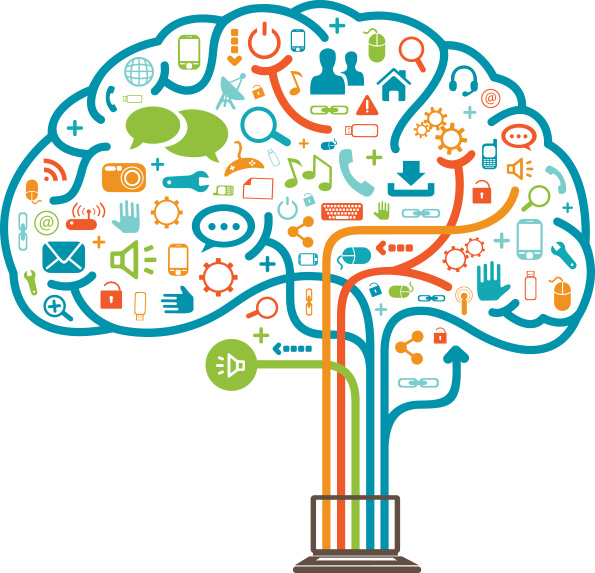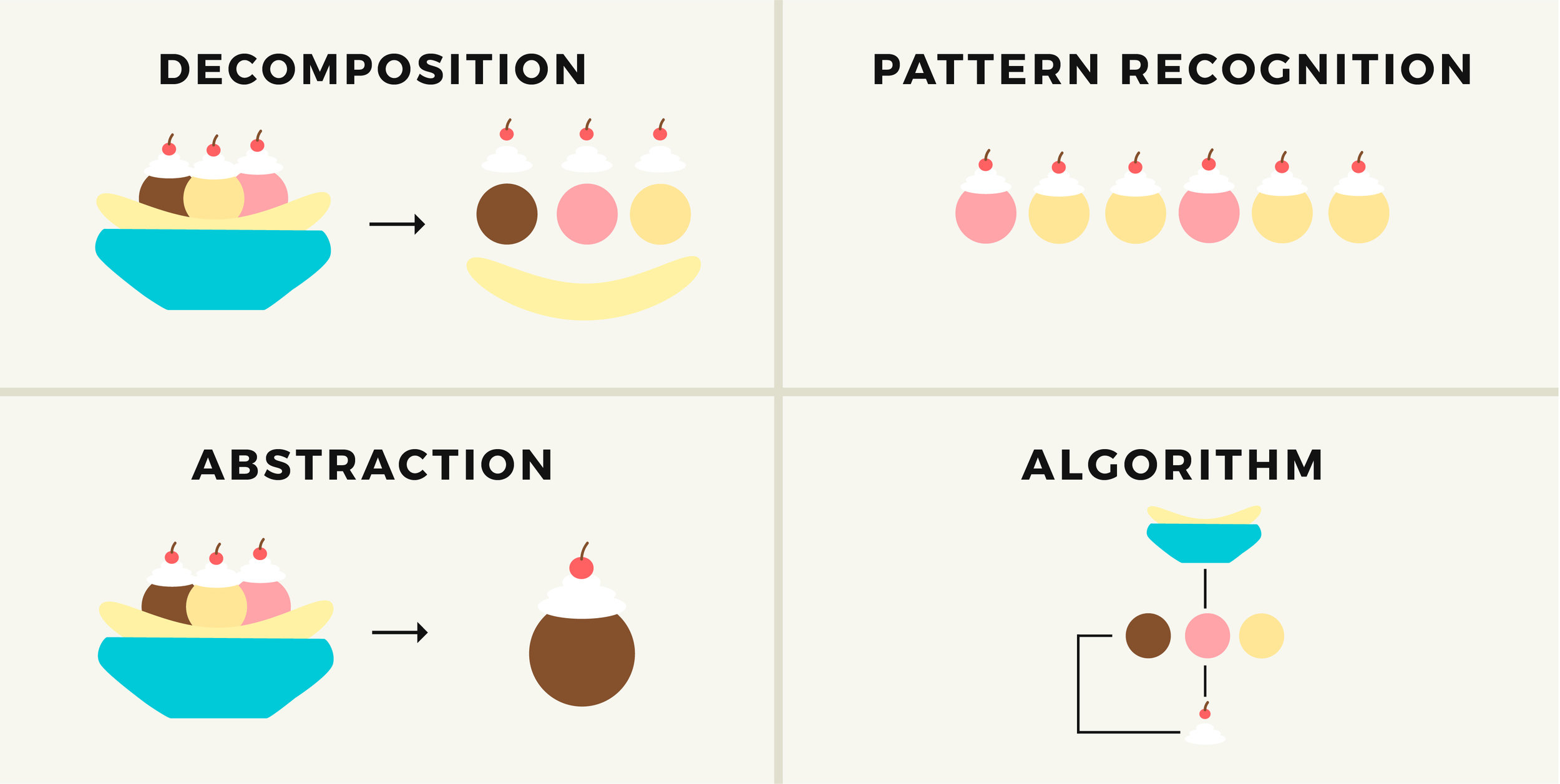The Definition of Computational thinking
Computational thinking(CT) is a skill in solving various problems in various areas of life through concepts and methods in computing and computer science. In education, Computational thinking is a set of problem-solving methods that involve expressing problems and their solutions in a way that computers can also perform. Artificial intelligence is currently the most popular example of computational thinking, but it does not fully represent the field.
The introduction of computational thinking dates back to the 1950s and involves ideas such as data representation, and logical organisation.
In 2006, Jeannette Wang (2006) proposed that Computational thinking is an essential skill for everyone and argues for the importance of integrating computational thinking into other school subjects, which brought the term computational thinking to the forefront of science.
Four cornerstones of computational thinking
As the photo above illustrates, computational thinking can be broken down into the following 4 parts.
DECOMPOSITION-breaking down a complex problem or system into smaller, more manageable parts.
PATTERN RECOGNITION-looking for similarities among and within problems.
ABSTRACTION-focusing on the important information only, ignoring irrelevant detail.
ALGORITHMS-developing a step-by-step solution to the problem, or the rules to follow to solve the problem.
In this way, we can transform difficult problems back into problems that we know how to solve.
As Lamprou and Repenning (2018) have argued Computational thinking is considered to be an essential skill for the 21st century. Some countries have proposed programmes to integrate programming thinking and computer science into basic education. For example, Switzerland has recently launched a national curriculum called “Lehrplan 21”, which requires computer science education for primary and secondary school students.
As mentioned before, computational thinking teaches us how to think and how to break down a complex problem into small steps that we can solve. For example, if we want a cup of tea. We can break it down into these steps. Firstly, boil a pot of hot water, then prepare the tea bags and cups, then put the tea bags into the cups and pour the boiling water into the cups. These are the little things in life that demonstrate computational thinking.
We can expand on this idea. We can use recursive thinking or parallel processing to model the problem so that it is easy to handle. We can apply this kind of computational thinking when we need to do a complex project in the future. Firstly, sort out the logic of the problem and break it down into several solvable steps. Then in a team, we can each be responsible for a different part and then work together to complete the project. The next time we encounter the same problem, we can look for commonalities between the two projects and then find a way to solve that type of project.
This is also true in learning. If we have a big goal, we can break it down into smaller goals and then go through them one by one.
1.Wing J. 2006. Computational thinking. Communications of the ACM, 49(3), 33–36.
2.Lee, I. et al. 2011. Computational thinking for youth in practice ACM Inroads, 2(1), pp. 32–37. Available at: https://doi.org/10.1145/1929887.1929902.

